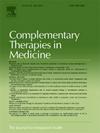“It’s not just another task”: Pediatric nurses' perspectives on using lavender oil chest wraps as complementary treatment for infants with bronchiolitis
IF 3.5
3区 医学
Q1 INTEGRATIVE & COMPLEMENTARY MEDICINE
引用次数: 0
Abstract
Background
Bronchiolitis is a leading cause of hospitalization during the first year of life, but currently no effective treatment exists. The supportive management of bronchiolitis is therefore often associated with frustration by both caregivers and healthcare professionals. We explored nurses’ perceptions of lavender chest wraps (LCWs) as a complementary approach to routine care.
Methods
Semi-structured interviews were conducted with pediatric nurses from two Swiss hospitals involved in a clinical trial on LCWs for bronchiolitis. Interview transcripts were analyzed using a qualitative descriptive approach, aimed at providing a rich summary of participants’ ideas, experiences and opinions.
Results
Eighteen nurses were interviewed. They identified positive impacts of LCWs on infants, parents and the therapeutic relationship, in the context of limited conventional care for bronchiolitis. However, site-specific differences raised questions regarding how to effectively integrate LCWs into standard care practices while preserving their identity as a complementary therapy. Nurses identified time constraints, organizational issues and specific training needs as important factors for routine integration of LCWs in hospital settings.
Discussion
This study contributes to a better understanding of the potential effects of LCWs on infants, parents and the therapeutic relationship, and highlights the added value of LCWs for supporting minimal handling. Our findings also underline nurses’ role in integrating and delivering complementary medicine interventions in hospital settings, while identifying organizational barriers to successful implementation. Methodologically, this study demonstrates the contribution of qualitative research in the context of RCTs, offering context-specific insights that may aid in interpreting clinical outcomes.
“这不仅仅是另一项任务”:儿科护士对使用薰衣草油胸膜作为毛细支气管炎婴儿补充治疗的看法
背景:毛细支气管炎是新生儿第一年住院治疗的主要原因,但目前尚无有效的治疗方法。因此,毛细支气管炎的支持性管理通常与护理人员和医疗保健专业人员的挫折有关。我们探讨了护士对薰衣草胸膜(LCWs)作为常规护理的补充方法的看法。方法对瑞士两家医院的儿科护士进行半结构化访谈,这些护士参与了一项关于LCWs治疗细支气管炎的临床试验。访谈记录分析使用定性描述的方法,旨在提供丰富的总结参与者的想法,经验和意见。结果共访谈了18名护士。他们确定了在毛细支气管炎传统护理有限的背景下,LCWs对婴儿、父母和治疗关系的积极影响。然而,具体地点的差异提出了关于如何有效地将LCWs整合到标准护理实践中,同时保持其作为补充治疗的身份的问题。护士认为时间限制、组织问题和特殊培训需求是影响医院环境中LCWs常规整合的重要因素。本研究有助于更好地理解LCWs对婴儿、父母和治疗关系的潜在影响,并强调LCWs在支持最小处理方面的附加价值。我们的研究结果还强调了护士在医院环境中整合和提供补充医学干预措施方面的作用,同时确定了成功实施的组织障碍。在方法学上,本研究证明了定性研究在随机对照试验背景下的贡献,提供了可能有助于解释临床结果的特定背景的见解。
本文章由计算机程序翻译,如有差异,请以英文原文为准。
求助全文
约1分钟内获得全文
求助全文
来源期刊

Complementary therapies in medicine
医学-全科医学与补充医学
CiteScore
8.60
自引率
2.80%
发文量
101
审稿时长
112 days
期刊介绍:
Complementary Therapies in Medicine is an international, peer-reviewed journal that has considerable appeal to anyone who seeks objective and critical information on complementary therapies or who wishes to deepen their understanding of these approaches. It will be of particular interest to healthcare practitioners including family practitioners, complementary therapists, nurses, and physiotherapists; to academics including social scientists and CAM researchers; to healthcare managers; and to patients. Complementary Therapies in Medicine aims to publish valid, relevant and rigorous research and serious discussion articles with the main purpose of improving healthcare.
 求助内容:
求助内容: 应助结果提醒方式:
应助结果提醒方式:


